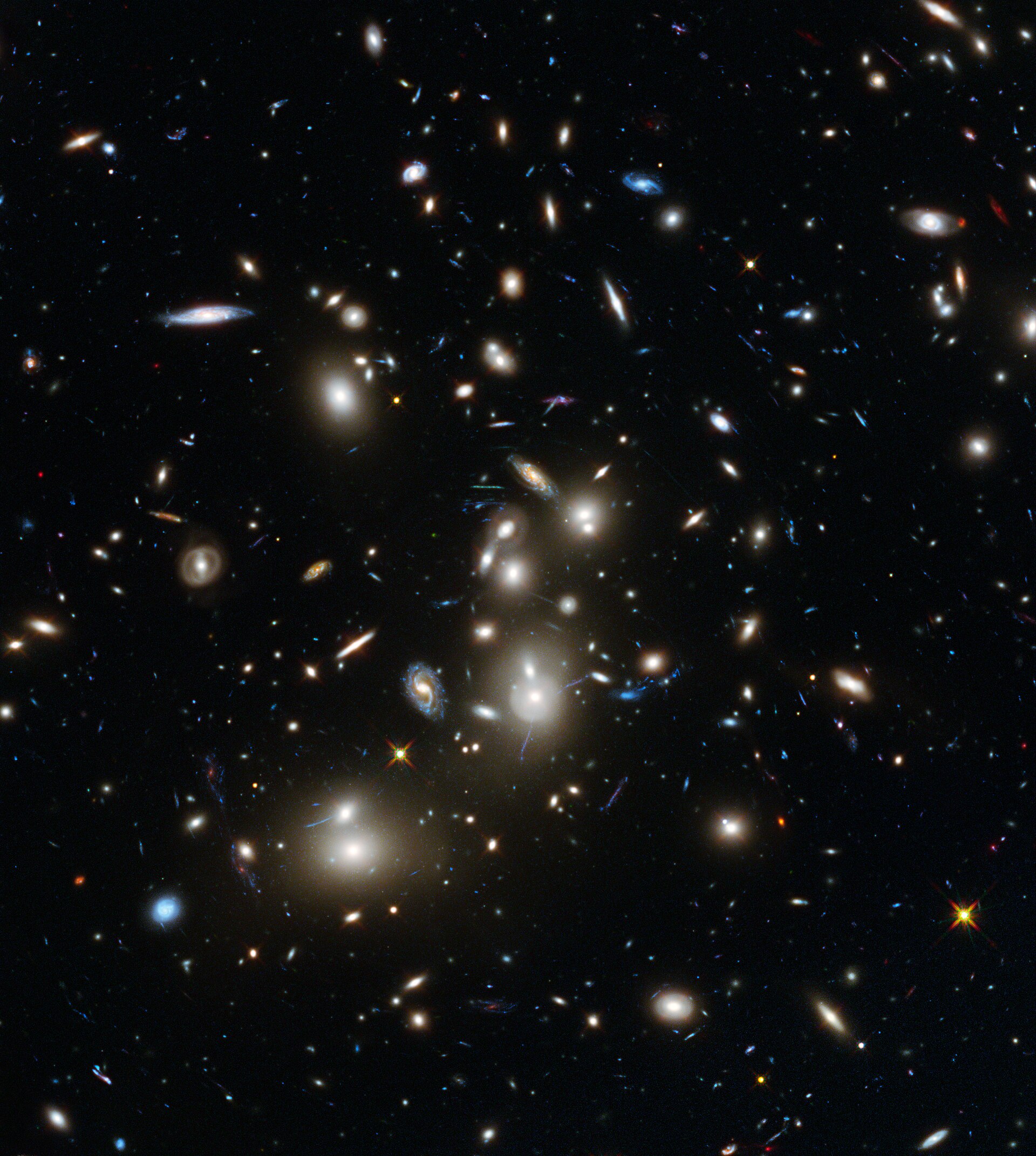Finn Giddings
Research
SFR in Galaxy Clusters
 Galaxy clusters are the among largest gravitationally bound structures in the universe and can contain hundreds to thousands of galaxies. These structures form at the nodes of the cosmic web by graviationally attracting galaxies from the surronding volume.
Though mostly composed of massive dark matter halos, as well as super-heated plasma (called the intercluster medium or ICM), the galaxies within these structures often exhbit different characteristics when compared to galaxies not in clusters or any larger structure.
Examples of the differing characteristics include: higher stellar masses, older stellar populations, decreased star formation rate (SFR), and elliptical morpholoy, which all suggest the increased maturation of cluster galaxies.
Galaxy clusters are the among largest gravitationally bound structures in the universe and can contain hundreds to thousands of galaxies. These structures form at the nodes of the cosmic web by graviationally attracting galaxies from the surronding volume.
Though mostly composed of massive dark matter halos, as well as super-heated plasma (called the intercluster medium or ICM), the galaxies within these structures often exhbit different characteristics when compared to galaxies not in clusters or any larger structure.
Examples of the differing characteristics include: higher stellar masses, older stellar populations, decreased star formation rate (SFR), and elliptical morpholoy, which all suggest the increased maturation of cluster galaxies.
I work the with the Observations of Redshift Evolution in Large Scale Environments (ORELSE) Survey to investigate trends in [OII] dervived SFRs in star forming (SF) galaxies at z ~ 1. We are particualry interested in how both the local and global
overdensity (or environment) that a galaxy resides in influences its SF ability, and how that relation evolves with redshift.
Galaxy Pairs in Proto-clusters
 Galaxy proto-clusters are the progenitors to the galaxy cluster. We typically find galaxy clusters in the local universe and out to z ~ 1 - 2 (roughly 7 - 9 billion years ago), wheras galaxy proto-clusters exist at larger distances or higher redshifts (z > 2, or greater than 9 billion years ago).
At these large lookback times, galaxy proto-clusters are still forming and accreting galaxies, and many open questions remain about how these systems fully devlop into galaxy clusters, as well as to what extent these systems influences the properties of their member galaxies.
Galaxy proto-clusters are the progenitors to the galaxy cluster. We typically find galaxy clusters in the local universe and out to z ~ 1 - 2 (roughly 7 - 9 billion years ago), wheras galaxy proto-clusters exist at larger distances or higher redshifts (z > 2, or greater than 9 billion years ago).
At these large lookback times, galaxy proto-clusters are still forming and accreting galaxies, and many open questions remain about how these systems fully devlop into galaxy clusters, as well as to what extent these systems influences the properties of their member galaxies.
I study one such proto-cluster, the Hyperion Proto-supercluster at z ~ 2.5. This strucuture is particularly massive (at ~ 5 x 10^15 solar masses) and is located within the COSMOS field. Using spectroscopic redshifts from the
Charting Cluster Construction with VUDS and ORELSE (C3VO) Survey in combination with photometric redshifts from COSMOS 2020, I am identifying potential galaxy pairs within Hyperion. My goal is to measure the pair fraction of the system (as a proxy for the merger rate) in order to determine what role
ex stiu processes are contributing to the mass build up of cluster galaxies.
FUV Heating with LYRA
 Dwarf galaxies are a subtype of galaxies that are much smaller than typical galaxies. Being both low mass and dark matter dominated, dwarf galaxies are computationally easier to simulate allowing us to investigate their
formation and evolution across cosmic time.
Dwarf galaxies are a subtype of galaxies that are much smaller than typical galaxies. Being both low mass and dark matter dominated, dwarf galaxies are computationally easier to simulate allowing us to investigate their
formation and evolution across cosmic time.
I currently work with LYRA, a novel dwarf galaxy simulation that resolves the multi-phase interstellar medium (ISM) down to 10 K, forms individual stars sampled from the initial mass function (IMF), and resolves supernovae blast waves with variable energy.
I am focused on adding in far ultraviolet (FUV) radiation from O and B type stars to LYRA to produce photoelectric heating. This will allow me to disern how such heating influences the baryonic cycle within dwarf galaxies.
HST Grism Spectroscopy
 As a member of the C3VO team, I am helping to classify thousands of spectroscopic redshifts obtained from Hubble Space Telescope (HST) grism measurements and fitted with grizli.
As a member of the C3VO team, I am helping to classify thousands of spectroscopic redshifts obtained from Hubble Space Telescope (HST) grism measurements and fitted with grizli.